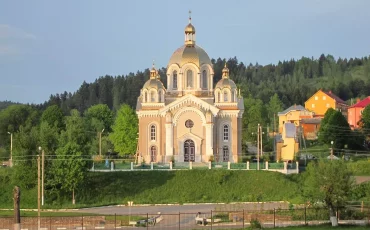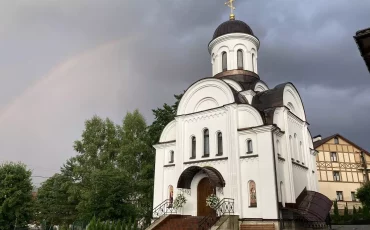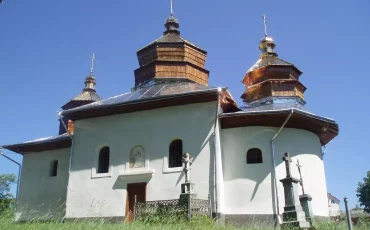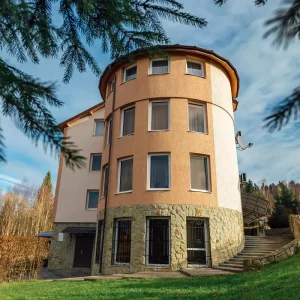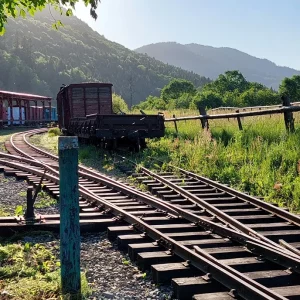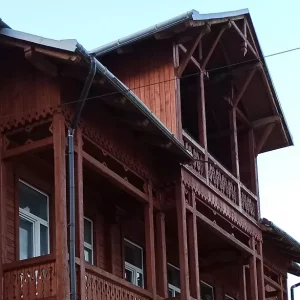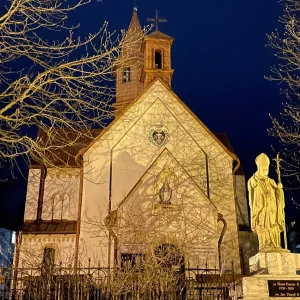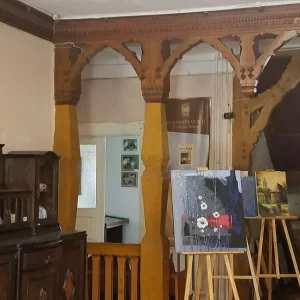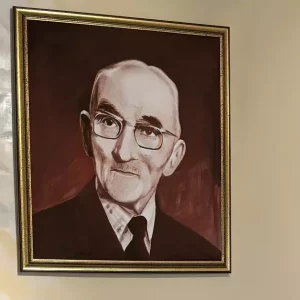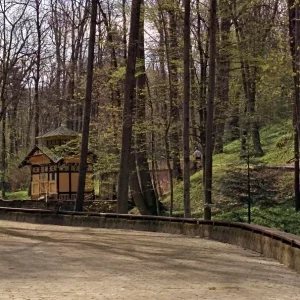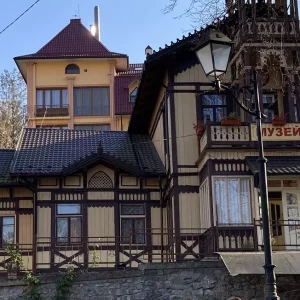Nowadays, only the defensive ramparts partially remain of the old castle fortifications. During the turbulent times of the National Liberation War led by Bohdan Khmelnytskyi in the mid-17th century, the castle and church were partially destroyed. After the Poles returned to the area, the church and bell tower were rebuilt by Samuel Cebrowski, the then owner of Skhidnytsia.
In the second half of the nineteenth century, the oil industry began to develop in Skhidnytsia. To establish oil production, a large number of engineers and technicians moved to the village, mostly belonging to the Catholic denomination of Christianity. The old wooden church at that time had most likely ceased to exist or could not meet the needs of a large number of believers.
Therefore, in 1896, a majestic wooden church of St. Kinga was built in Skhidnytsia according to the project of the Krakow architect Slawomir Odziwolski. The funds for the construction of the church were provided by the Oil Company, Princess Maria Lubomirska, oil industrialist Kazimierz Oddziwolski, and other believers. The church had a magnificent interior decoration and was even equipped with its own organ.
After 1945, the Catholic community of the village ceased to exist, as all the Poles of Skhidnytsia moved to Poland. The Soviet authorities did not spare this shrine, and in the 1960s the church was dismantled, and the building materials were planned to be used to build a school in the neighbouring village of Pereprostyna. However, the elements intervened in the plans, as the wooden material of the former church was washed away by a stream as a result of a flood. All that remains in memory of the Church of St. Kinga in Skhidnytsia are the stone plinth and bell tower of the church, as well as the tombstone of Kazimierz Odziwolski. In 1999, the community of the Ukrainian Autocephalous Orthodox Church (now the OCU) built a wooden church of St Nicholas on the preserved foundation.
The architecture of this wooden shrine is interesting and original. It differs from the classical canons of Ukrainian Orthodox churches. In particular, the narthex, nave and altar of the church are located in one volume. The church has three square towers with a four-pitched roof with crosses on top. Next to the church, you can see a stone bell tower and a sculpture of Jesus Christ with his left hand raised in the air.

